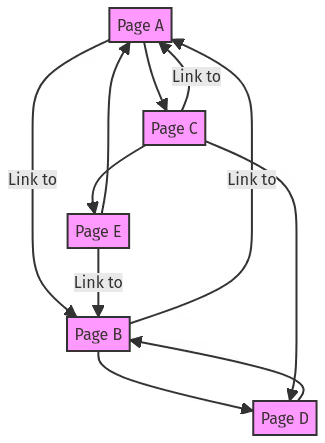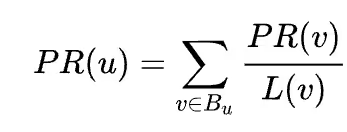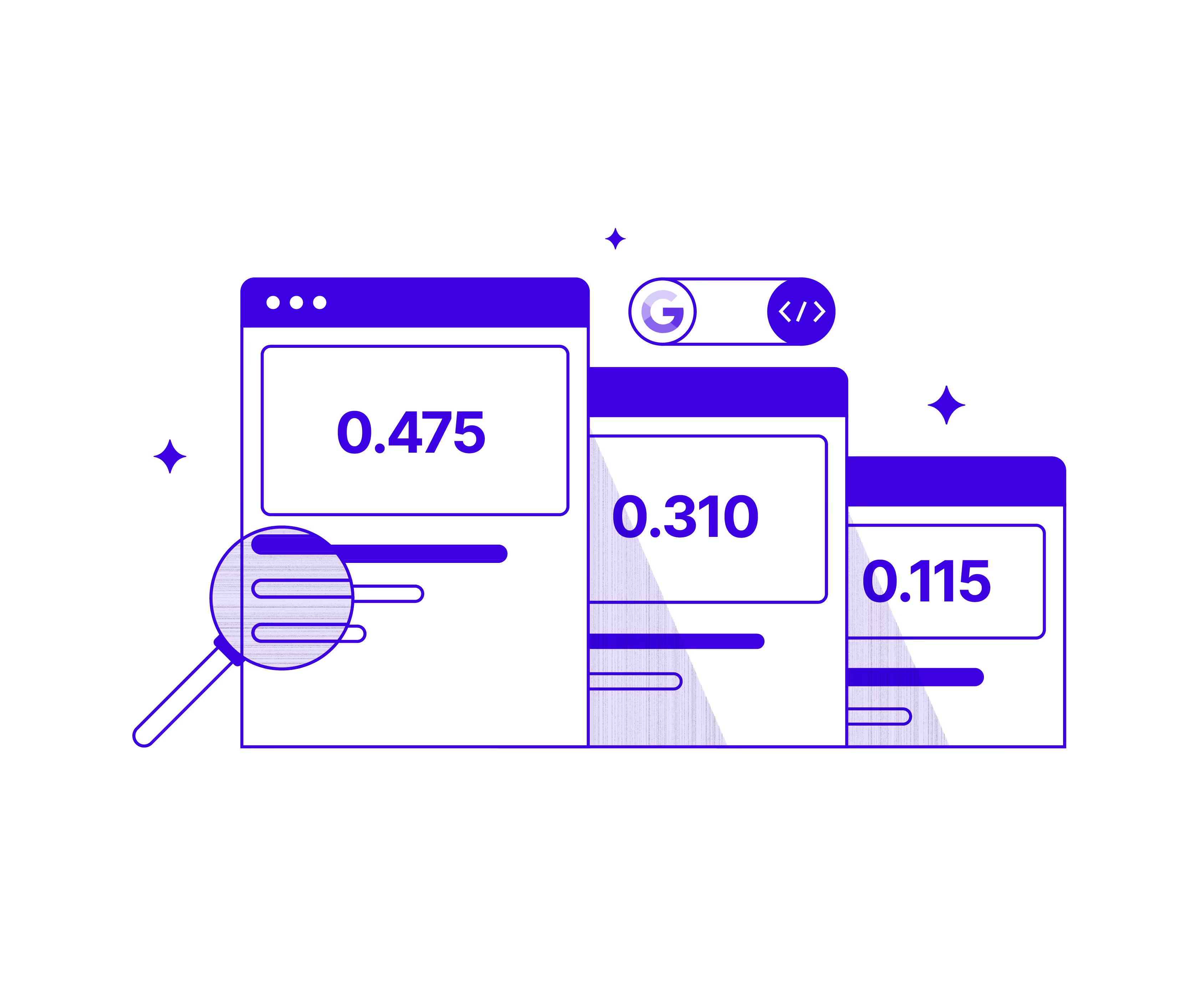If you’ve been in the SEO (search engine optimization) world for long, you’ve undoubtedly heard the term “PageRank.” Google created PageRank as an objective metric to help it place web pages in their search results. Historically, the higher your PageRank, the higher your placement was in search, and therefore, the more likely your website was to be clicked on and trusted by users.
While less central to search engine rankings today, Google’s PageRank algorithm was at one point the defining factor in how web pages were ranked in search results. In this piece, we’ll examine PageRank from a historical and practical perspective. We’ll also look at its role now and some of the things you can do to improve your website’s search presence today. By the end, you’ll understand how PageRank works, how to get a higher PageRank, and PageRank’s role in search rankings over time.
The History of Google Page Rank
PageRank was developed by Larry Page and Sergey Brin, the founders of Google, while they were Ph.D. students at Stanford University in the late 1990s. The idea behind PageRank is seemingly simple: it ranks web pages based on their importance, as determined by the number and quality of links to them.

This was a significant departure from existing search engines that ranked results based primarily on how many times a search term appeared on a webpage. PageRank treated the burgeoning internet like a graph, with pages as nodes and hyperlinks as connections between them. Links were essentially a voting system - each link to a page was a vote for its importance - but not all votes were equal. Links from more important pages (i.e., those with more of their own links in) were given more weight than those from less important pages (i.e., those with fewer links into them).
The name "PageRank" is a play on multiple levels: it refers to webpages, but also to Larry Page himself. While the concept started as a primarily academic endeavor, the success of the algorithm and the growing popularity and usefulness of the internet drove Page and Brin to start the company whose name has become synonymous with searching the internet: Google.

PageRank was revolutionary at the time, but it obviously wasn’t the only thing that made Google so successful. As Page and Brin started to implement the algorithm, they also had to create a crawler that could ingest the massive number of pages and links popping up on the internet, as well as efficient ways to constantly re-calculate PageRank as links and pages were created and destroyed. They also had to revisit PageRank’s role in rankings as bad actors began to take advantage of its inherent weaknesses.
While the patents surrounding PageRank have expired and it plays a smaller role in Google’s search results today, the fundamentals of PageRank still lie at the heart of SEO. Let’s dive into how the algorithm works and how its role has changed over time.
Understanding PageRank
Fundamentally, here’s how the PageRank calculation works:
Given a defined set of linked web pages, PageRank calculates the probability that a person who clicks any single, random link will end up on a particular page. This allows the algorithm to assign a weight between 0 and 1 that any particular page will be the next one.
PageRank then uses the weight of that particular page (i.e., how likely it is to be clicked) to assign an even weight to each of its outgoing links. For example, if a page with a calculated PageRank value of .25 links to two other pages, it would confer half of its PageRank score to each of those pages (.125).
In mathematical terms, a simple version of the PageRank algorithm can be expressed as:

Where the PageRank (PR(u)) of any particular page is the summation of all pages linking to the page’s PageRank divided by the number of links each has.
In practice, the actual algorithm Page created also takes into account multiple links from the same page and a damping factor to account for the fact that each link click makes the user less likely to click another link, but I won’t go any further into the math here. You can read the entire patent if you’re interested.
Once PageRank was calculated for every page in a set of web pages, Google could combine PageRank with the density of a given keyword to calculate a score for each page in a list of search results. For example, if the user searched for “war and peace,” Google might find all the pages in its index that mentioned “war and peace” at least five times and then rank them from highest to lowest page rank. The first ten results with the highest PageRank would then be shown to the user as the first page of search results. This example is overly simplistic but illustrates the way that keyword density and PageRank worked together in the early iterations of Google’s search engine.
The Evolution of PageRank and Search Rankings
Over time, as Google gained market share and people began to understand PageRank, bad actors began to find ways to take advantage of it. “Black Hat” SEOs built link farms and spam comment bots to generate thousands of artificial signals designed to boost a website’s PageRank. These efforts generally didn’t reward good content but instead allowed companies to buy their way up the rankings.
Google found ways to tamp down these efforts by balancing PageRank with other ranking factors and manual reviews. They continue to change these factors every few weeks or months as new limitations and exploits are discovered. Recent updates have been aimed at thin content, AI-generated content, and non-helpful content.
Google has also stopped being as transparent in its approach to search rankings. Unlike the PageRank algorithm, Google’s current ranking methodology has not been filed in a patent or shared publicly, so while Google offers advice and best practices, it’s impossible to tell exactly how they’ll rank any particular web page.
Checking Your Site’s PageRank
Because the original PageRank algorithm was relatively straightforward, Google used to let you check your website’s PageRank through its API. This allowed Chrome extensions to annotate search results or show a page’s PageRank in real time through the browser. Unfortunately, this API was removed in 2016, so you can’t actually determine Google’s official PageRank for your site anymore.
That said, there are some alternatives that will approximate your site’s PageRank or similar metrics. For example, Ahrefs will give you any site’s “Domain Rating,” which serves as a measure of your site’s authority in relation to all the other sites in Ahrefs’ index, and “URL Rating,” which does the same for a single URL of a site.
Semrush, Moz, and Positional all offer similar metrics to help you understand how your page or domain compares with others. While these numbers are not exactly the same as Google’s official PageRank, they’re useful in benchmarking performance and understanding the effectiveness of your SEO efforts. PageRank is also often described as domain authority, "link juice," and "link equity."
Finally, it’s important to note that PageRank is not as big a part of Google’s core algorithm anymore. While checking your site’s rating using third-party tools is a good idea, you should also understand all the factors that go into Google rankings and some of the ways you can positively impact them.
Improving Your Site’s Rankings and PageRank in 2024
While PageRank isn’t as big a factor in Google’s search rankings anymore, it still holds some fundamental value. Google still uses reputable links as a factor in rankings, but they also use links to help them understand the relevance and relationship of pages to one another. So, improving your PageRank by increasing the number of high-quality inbound links to your site is generally a good thing, but it’s not the only thing anymore. Additionally, you have to be careful about paying for links or getting low-quality links, as these could do more harm than good.
Search Ranking Factors You Can Improve

Despite PageRank’s diminishing role in search results, there are many things you can do to help your site rank higher in Google search rankings. Here are a few of the factors you can work on immediately to improve your search rankings:
- User Experience - Focus on usability (including Core Web Vitals) as this is an increasingly important part of search rankings. Users want a site that is fast, easy to navigate, and error-free.
- Keyword Optimization - Use relevant, high-volume, low-difficulty keywords that your target audience is searching for. Integrate these keywords naturally into your website’s content, titles, meta descriptions, and URLs. The goal is to make your content’s topic more clear to crawlers while avoiding keyword stuffing.
- Content Quality, Freshness, and Multimedia - Prioritize high-quality, original, and informative content that addresses your audience's needs. Regularly update content to keep it fresh and incorporate diverse media formats like video, images, and diagrams when relevant.
- Social Signals - While a large social following might not directly improve your rankings, building an audience will help you generate more backlinks by encouraging others to share your content. Also, Google has gotten increasingly good at understanding brand signals on other platforms, for example, TikTok, and using those signals to influence organic search results.
- Mobile Responsiveness and Accessibility - Ensure your website is optimized for mobile users and those using screen readers or assistive devices. Responsive designs, proper alt tags on images, fast loading times, and easy navigation on smaller screens are all important considerations.
- Technical SEO and Site Structure - Ensure that structured data is properly displayed, a secure (HTTPS) connection is used, XML sitemaps are updated, and that you’re using internal links effectively.
- Local SEO - For businesses targeting a particular local market (e.g., restaurants, storefronts, event venues, etc.), optimizing for local SEO is crucial. Use local keywords, maintain listings on your Google Business Profile, encourage customer reviews, and create location-specific content.
While it’s tempting to take SEO shortcuts by paying for backlinks or generating loads of low-quality content, it’s getting increasingly difficult to outmaneuver Google in these efforts. I’ve seen many marketing teams completely destroy their domain’s reputation while trying to hack growth without actually helping users.
On the other hand, the brands that are getting the most out of their SEO efforts are publishing high-quality, helpful content, keeping up with Google’s technical recommendations, and ensuring users have a top-notch experience on their sites.
Final Thoughts
PageRank was a huge leap forward in organizing content on the internet and helped launch arguably the most important company in internet technology. Google’s use of PageRank helped them win the search engine war of the early 2000s and helped incentivize internet users to continue creating high-quality content that everyone now benefits from.
High-quality backlinks (and PageRank) will always be a part of the way content is evaluated online and an important part of SEO, but they’re far from the only factor. That’s why tools like Positional’s are such an important part of SEO today. The Positional suite can help you analyze, optimize, and improve your content efforts, ensuring that everything you publish has the best chance possible to hit the first page of search results.





